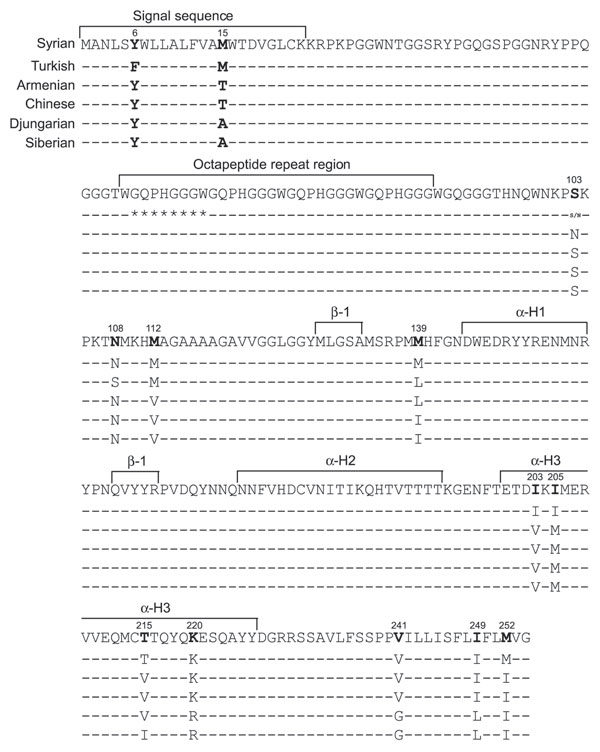Volume 15, Number 2—February 2009
Research
Characteristics of 263K Scrapie Agent in Multiple Hamster Species
Figure 7

Figure 7. Sequences of prion protein for 3 hamster species. Hamster genomic DNA was purified from whole uninfected hamster brain tissue by using the QIAamp DNA blood maxi 10 kit columns and the solutions and tissue protocol from QIAGEN Dneasy Blood and Tissue kit (QIAGEN, Valencia, CA, USA). PCR products were amplified by using both PuReTaq Ready-To-Go PCR beads (GE Healthcare, Piscataway, NJ, USA) and Expand High-Fidelity Taq polymerase (Roche Diagnostic Corp, Indianapolis, IN, USA). Successful amplicons were purified by using QIAquick PCR Purification kit (QIAGEN) according to manufacturer’s recommendations and sequenced by using their respective forward and reverse PCR primers with an ABI 3730xl DNA Analyzer (Applied Biosystems, Foster City, CA, USA). Sequence data were stored in the FINCH data management system (Geospiza, Seattle, WA, USA). Assembly and comparisons were made against the Syrian prion protein gene sequence by using Sequencher (Gene Codes, Ann Arbor, MI, USA). Amino acid substitutions are indicated; otherwise, sequence matches that of Syrian hamster.